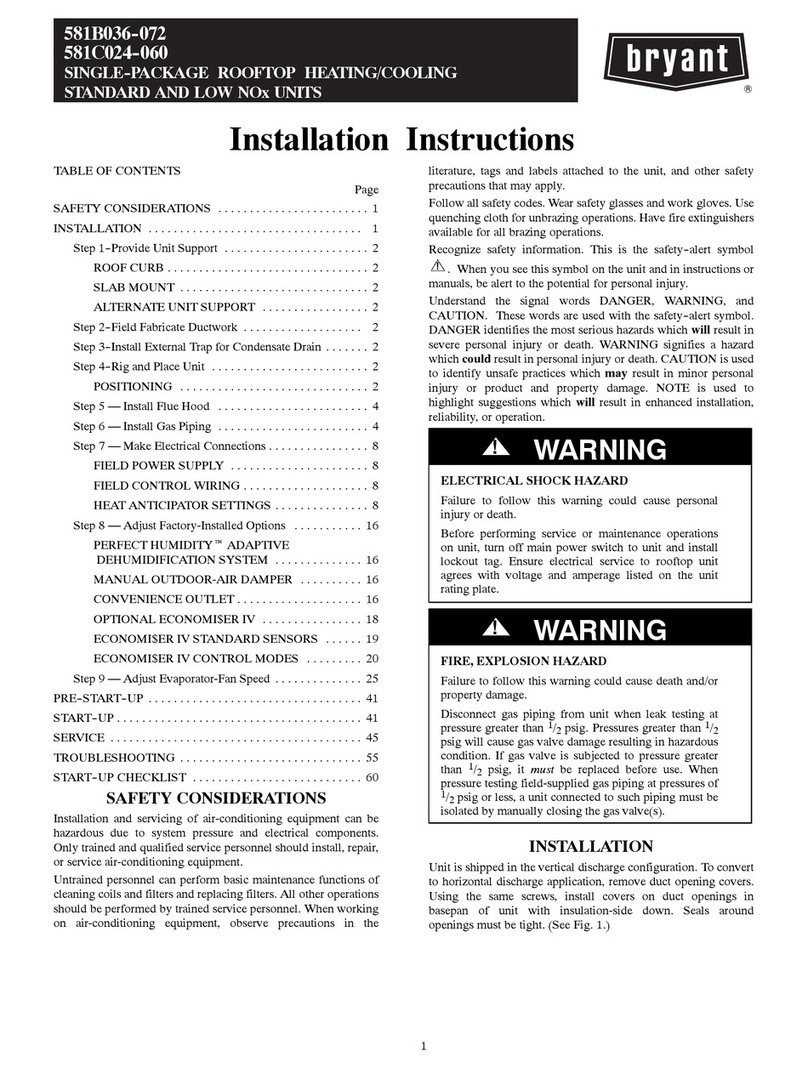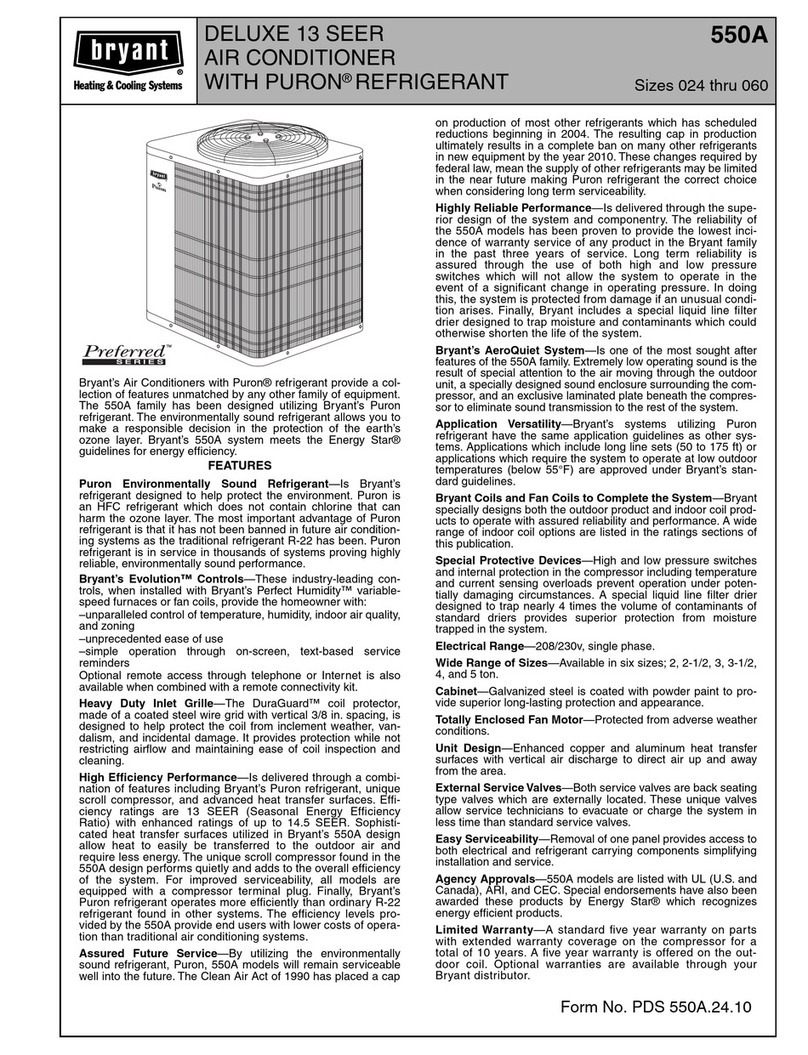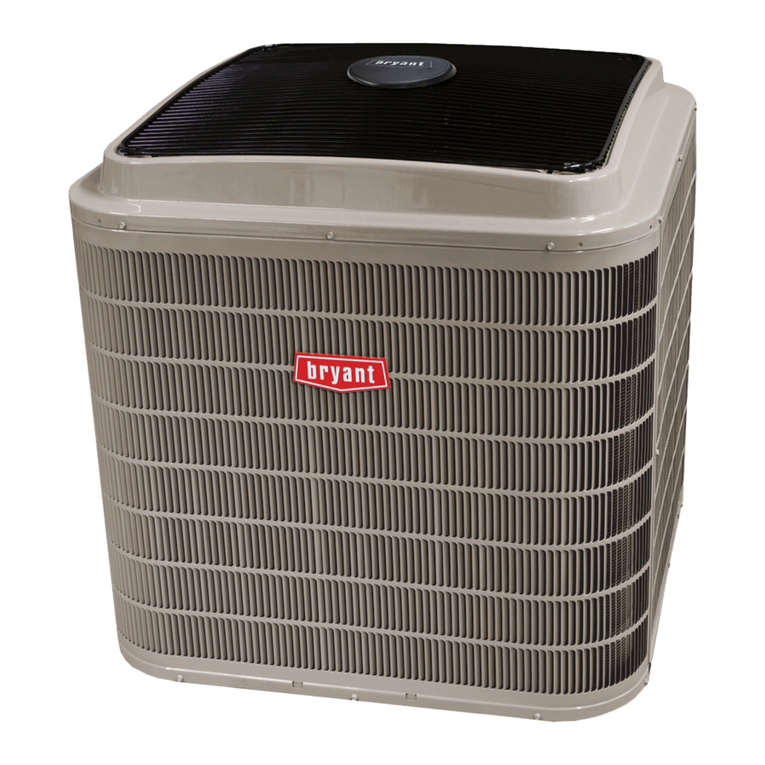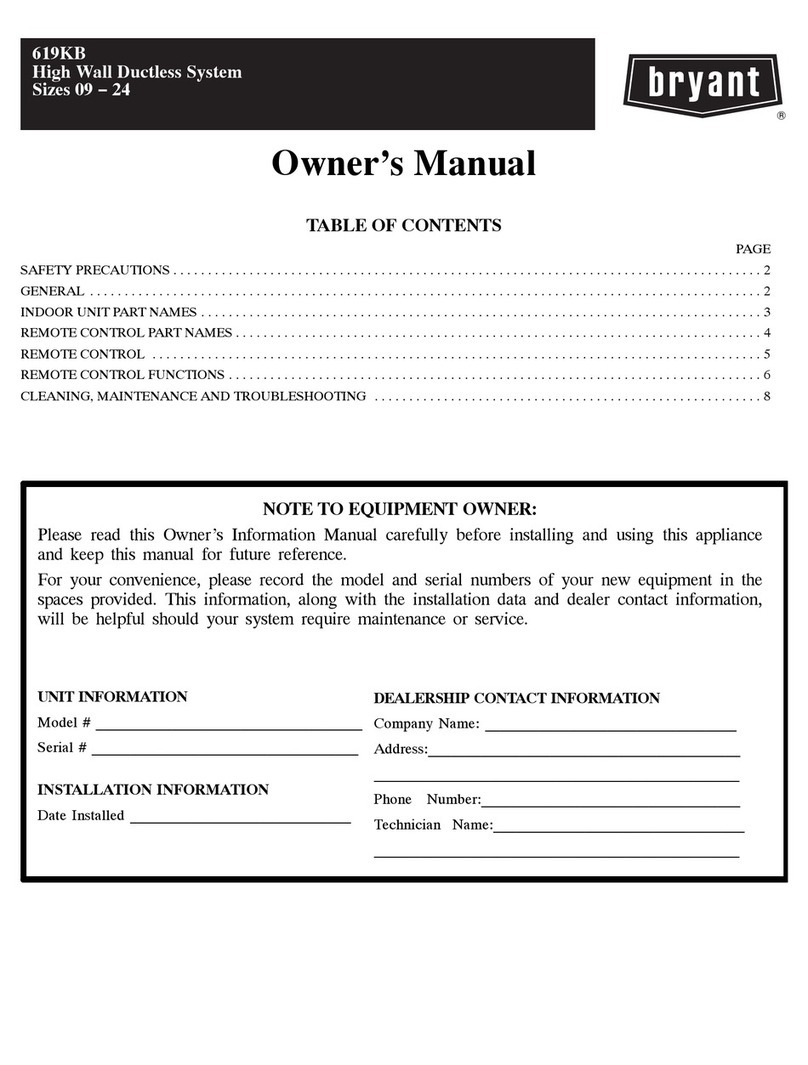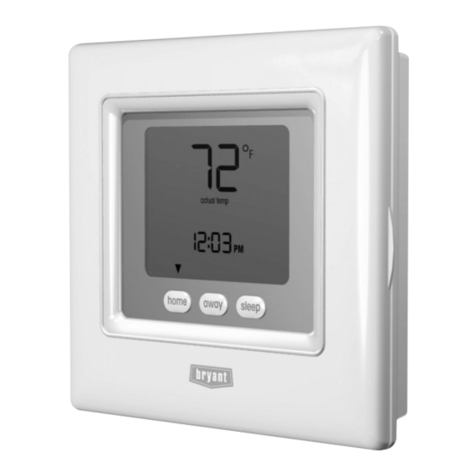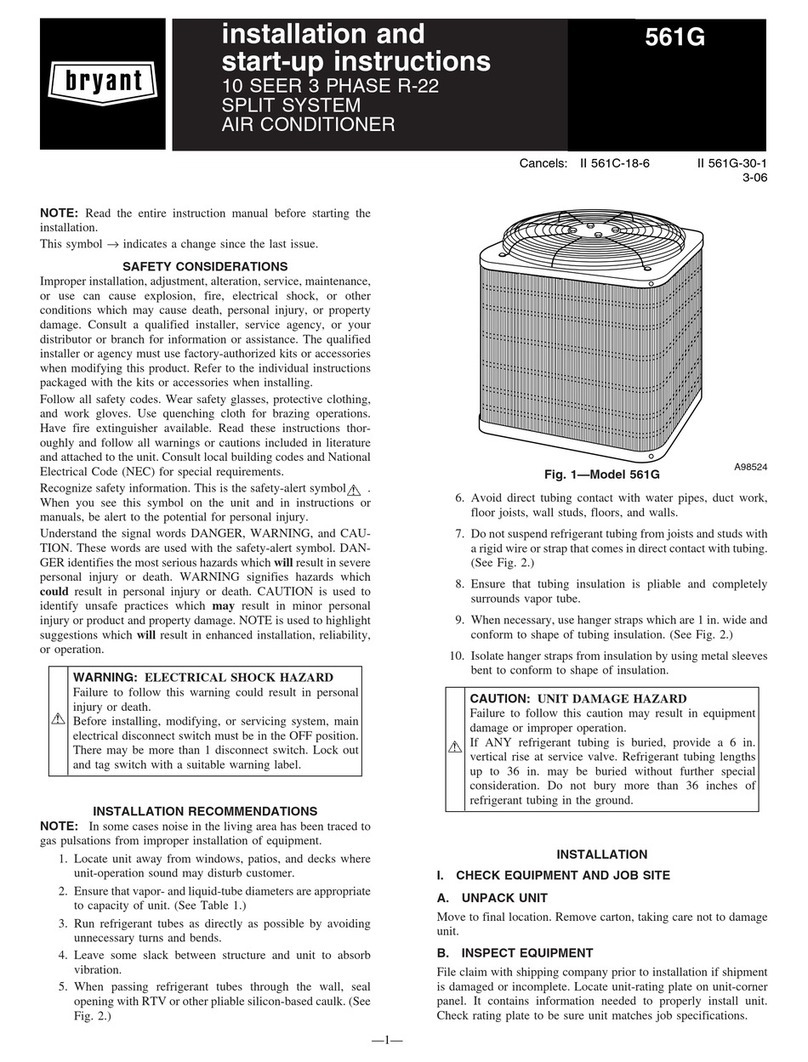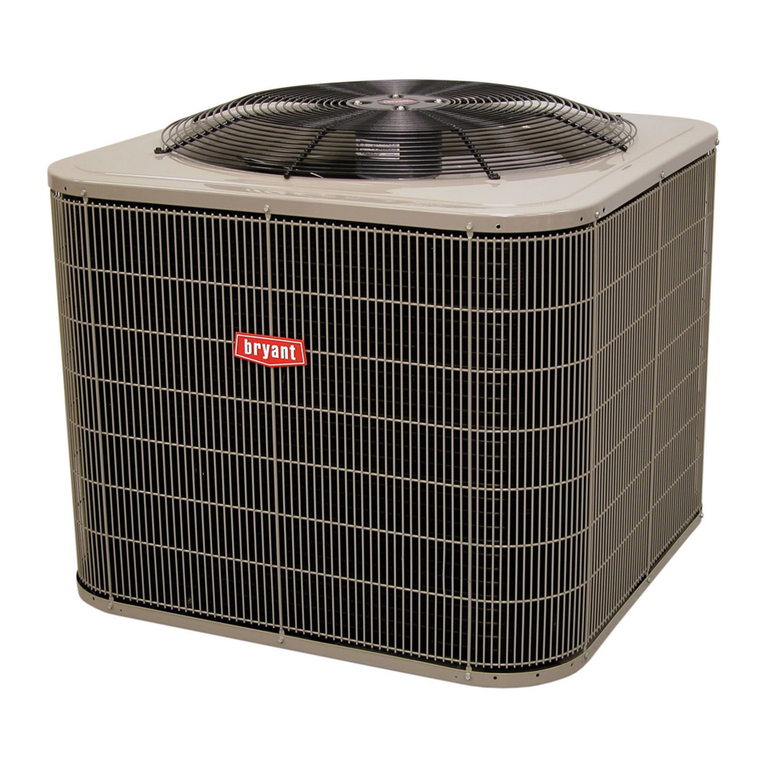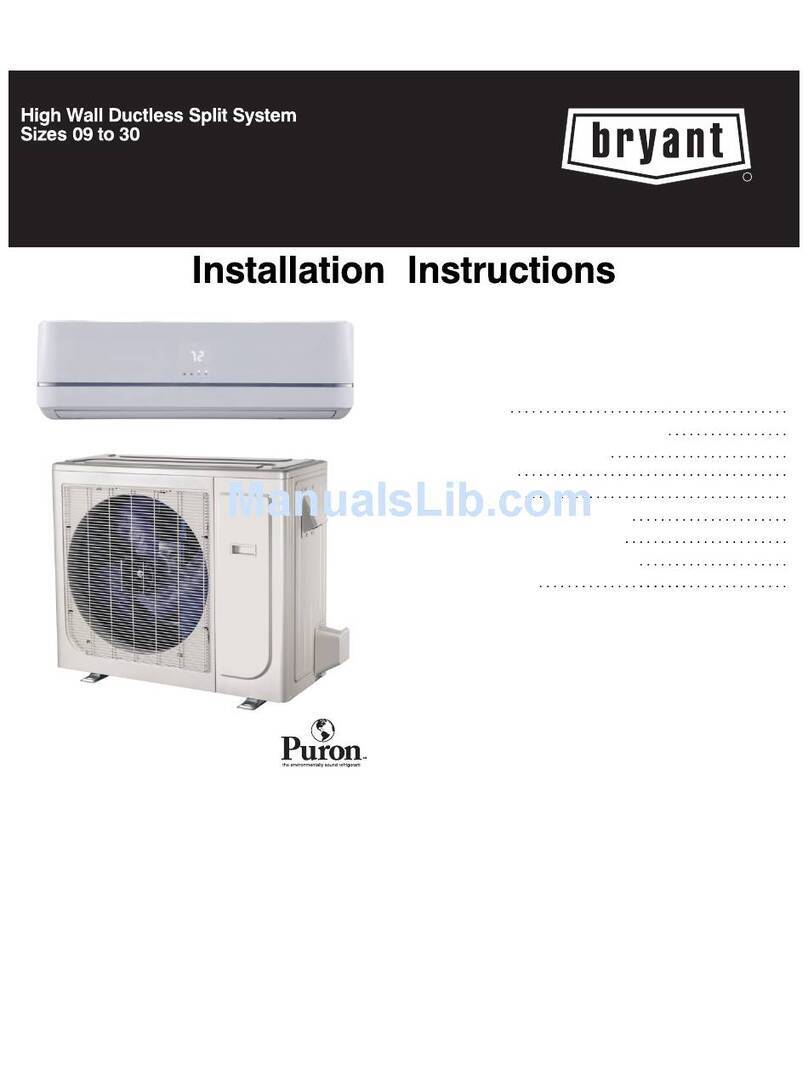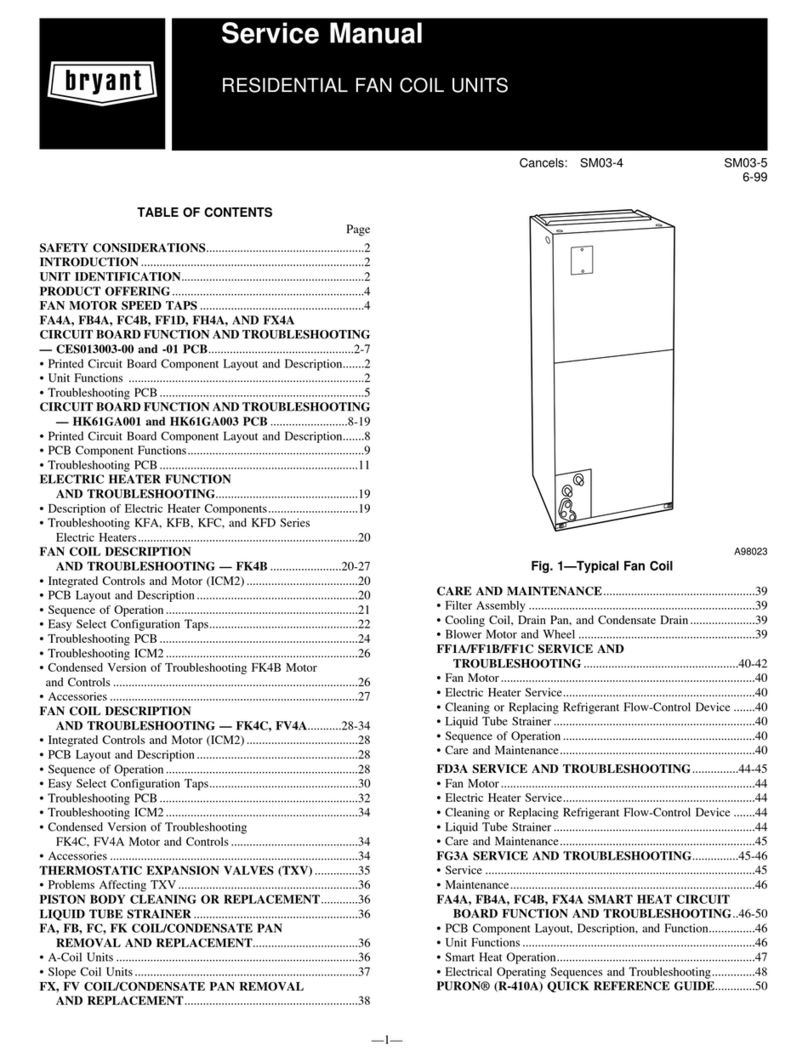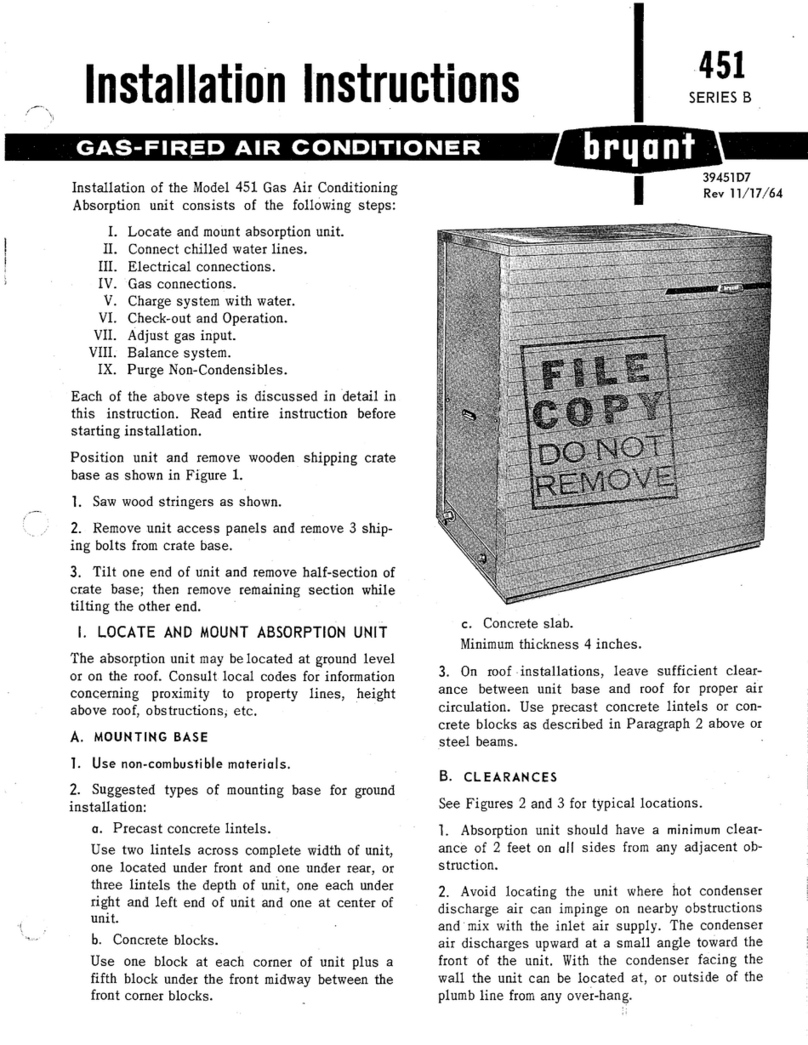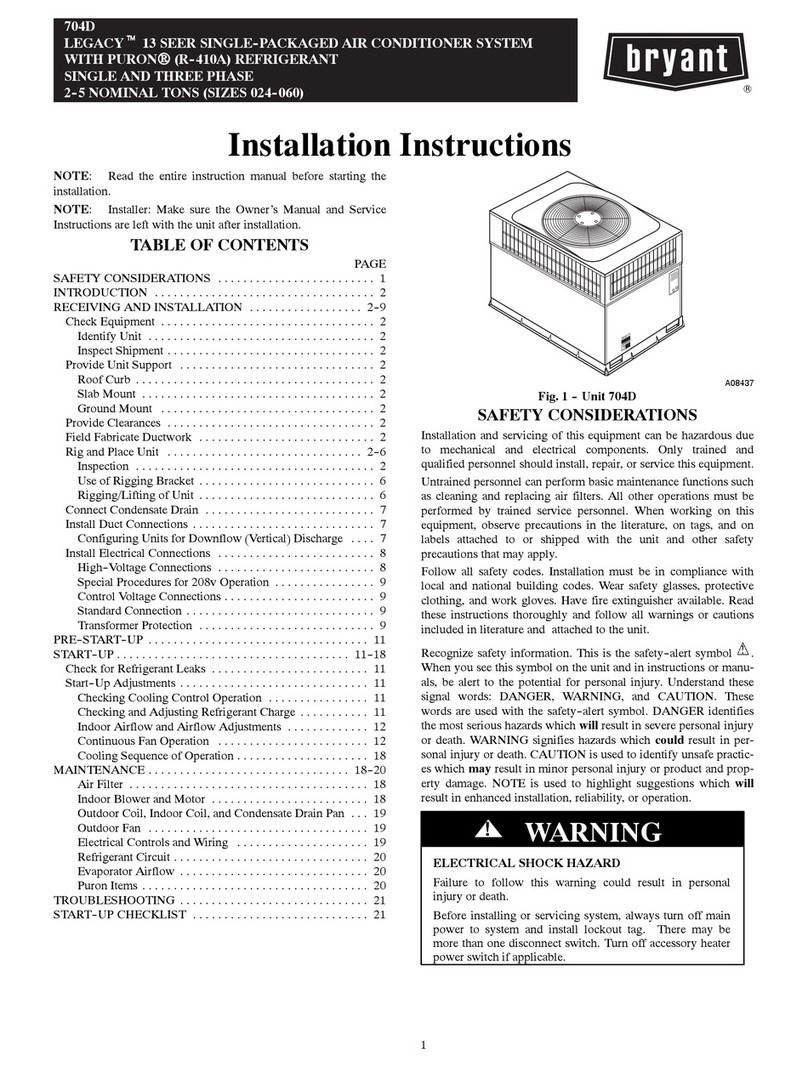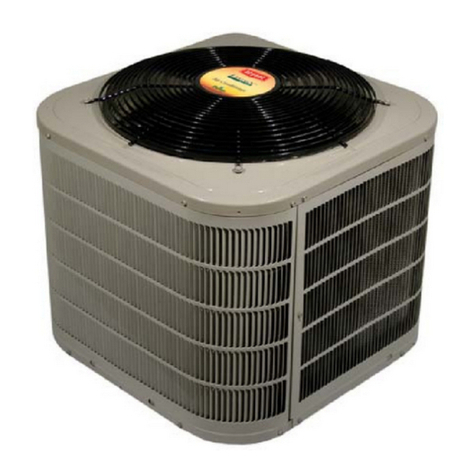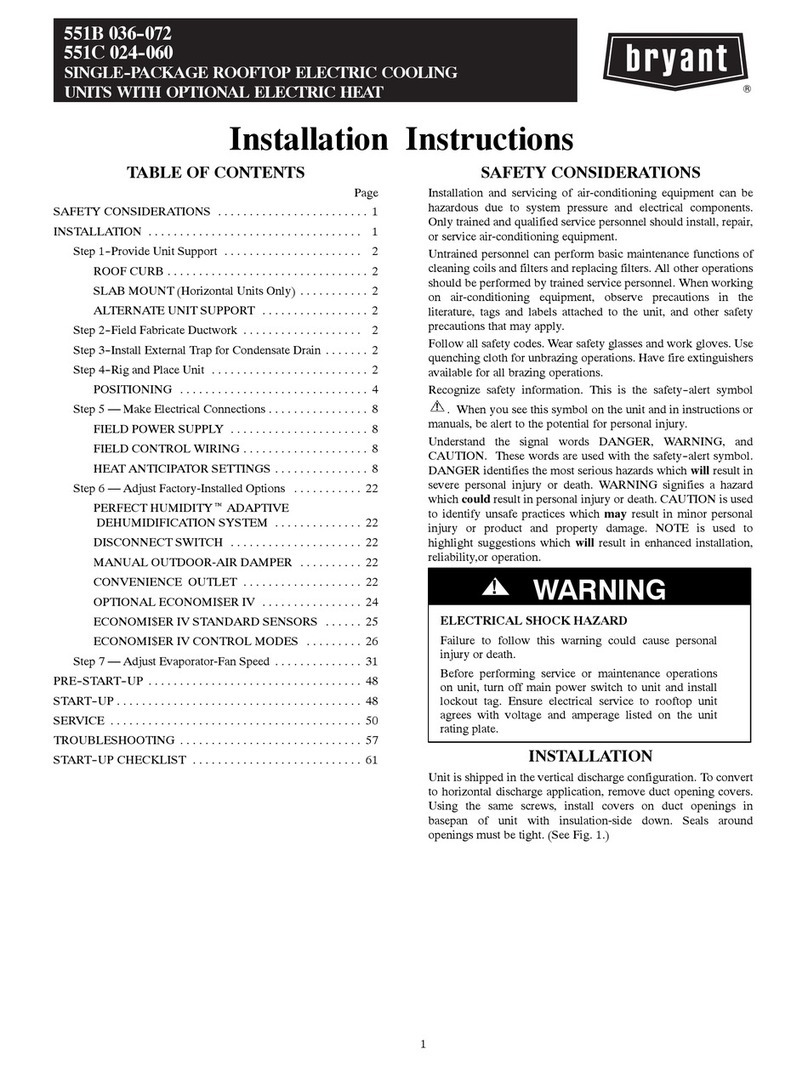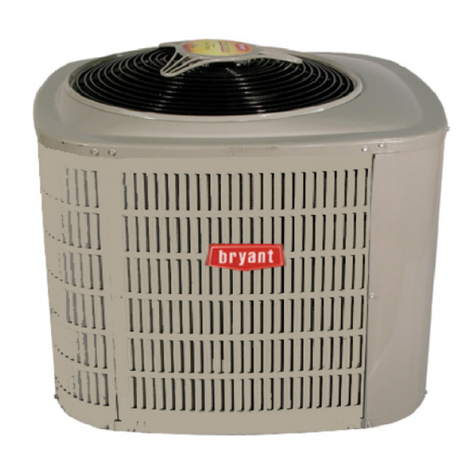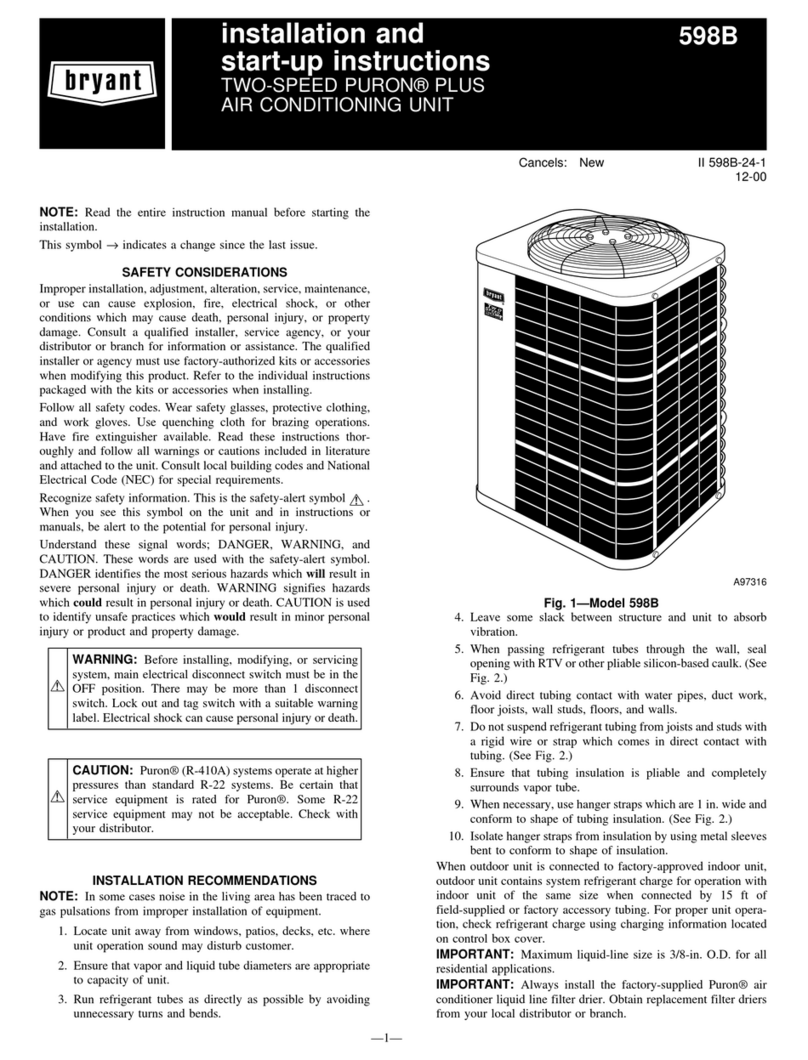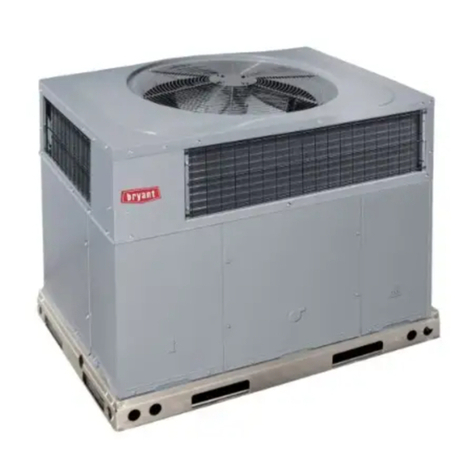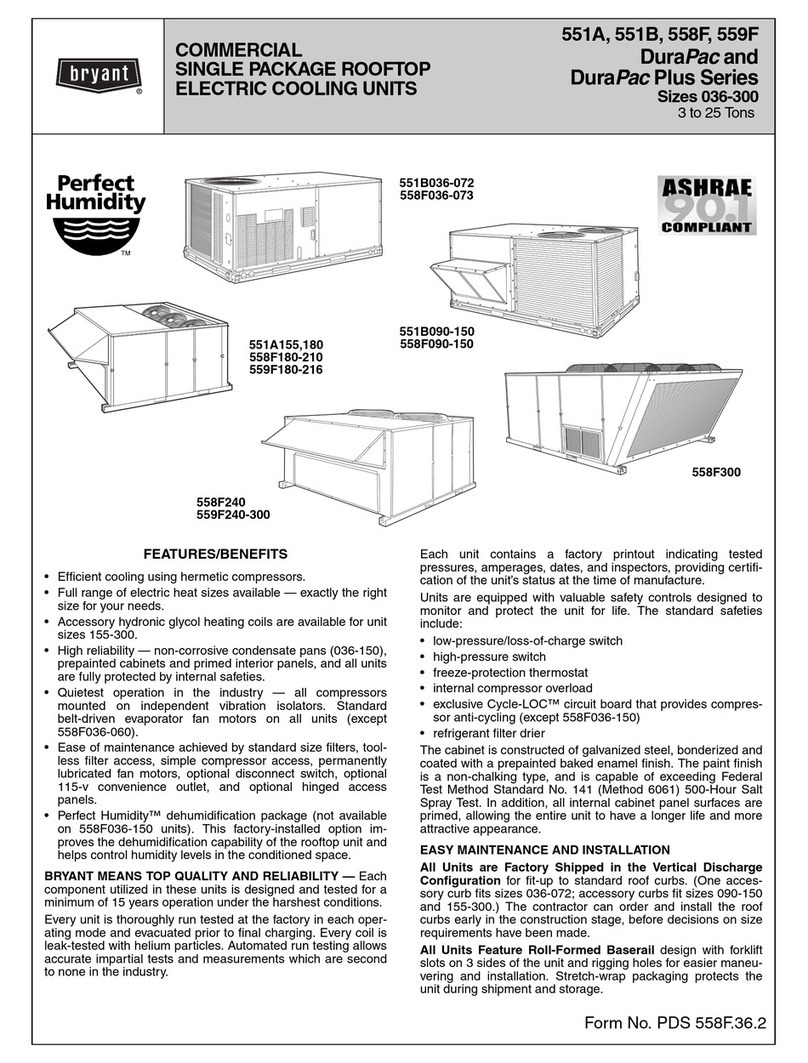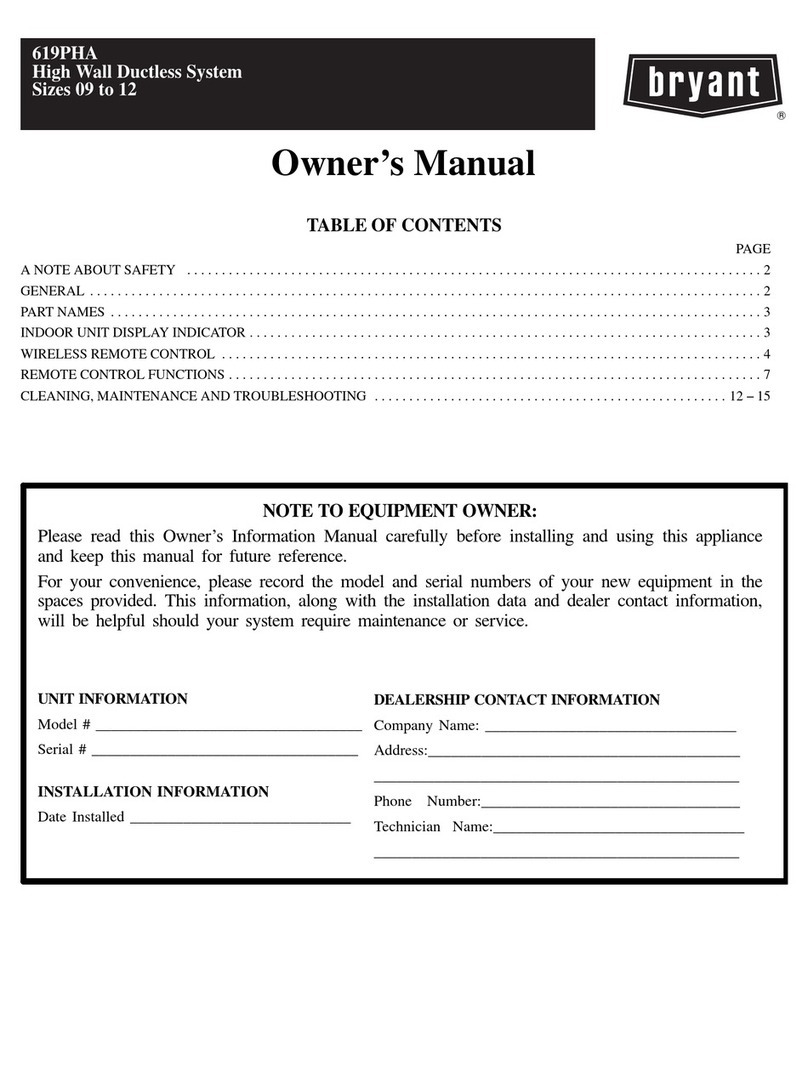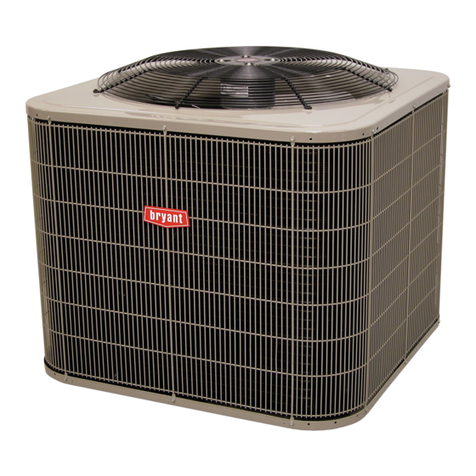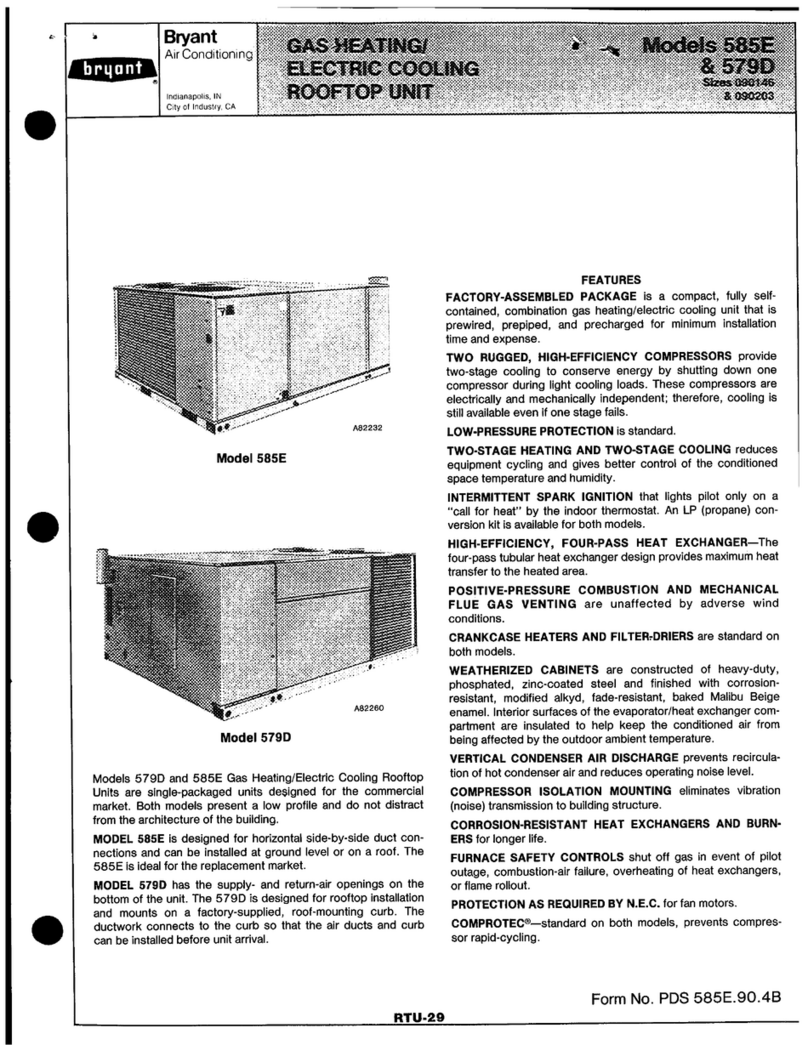
VI. MAKE PIPING CONNECTIONS
WARNING: Relieve pressure and recover all refrigerant
before system repair or final unit disposal to avoid
personal injury or death. Use all service ports and open all
flow-control devices, including solenoid valves.
CAUTION: If ANY refrigerant tubing is buried, provide
6-in. vertical rise at service valve. Refrigerant tubing
lengths up to 36 in. may be buried without further special
consideration. For lengths above 36 in., consult your local
distributor.
CAUTION: To prevent damage to unit or service valves
observe the following:
• Use a brazing shield.
• Wrap service valves with wet cloth or use a heat sink
material.
Outdoor units may be connected to indoor section using accessory
tubing package or field-supplied refrigerant grade tubing of correct
size and condition. Tubing diameters listed in Table 1 are adequate
for equivalent lengths up to 100 ft. DO NOT INSTALL EQUIVA-
LENT INTERCONNECTING TUBING LENGTHS GREATER
THAN 100 FT. Do not increase or decrease interconnecting tubing
diameters.
If refrigerant tubes or indoor coil are exposed to atmosphere, they
must be evacuated to 500 microns to eliminate contamination and
moisture in the system.
A. Outdoor Unit Connected to Factory-Approved
Indoor Unit
See Product Data Sheet for factory-approved indoor units.
Outdoor unit contains correct system refrigerant charge for opera-
tion with indoor unit of same size when connected by 15 ft of
field-supplied or factory-accessory tubing. Check refrigerant
charge for maximum efficiency.
B. Refrigerant Tubing
Connect tubing to fittings on outdoor unit vapor and liquid service
valves. (See Table 1.) Use refrigerant grade tubing.
C. Sweat Connection
CAUTION: To avoid valve damage while brazing, ser-
vice valves must be wrapped in a heat-sinking material
such as a wet cloth.
Service valves are closed from factory and ready for brazing. After
wrapping service valve with a wet cloth, tubing set can be brazed
to service valve using either silver bearing or non-silver bearing
brazing material. Consult local code requirements. Refrigerant
tubing and indoor coil are now ready for leak testing. This check
should include all field and factory joints.
VII. MAKE ELECTRICAL CONNECTIONS
WARNING: To avoid personal injury or death, do not
supply power to unit with compressor terminal box cover
removed.
Be sure field wiring complies with local and national fire, safety,
and electrical codes, and voltage to system is within limits shown
on unit rating plate. Contact local power company for correction of
improper voltage. See unit rating plate for recommended circuit
protection device.
NOTE: Operation of unit on improper line voltage constitutes
abuse and could affect unit reliability. See unit rating plate. Do not
install unit in system where voltage may fluctuate above or below
permissible limits.
NOTE: Use copper wire only between disconnect switch and
unit.
NOTE: Install branch circuit disconnect of adequate size per
NEC to handle unit starting current. Locate disconnect within sight
from and readily accessible from unit, per Section 440-14 of NEC.
A. Route Ground and Power Wires
Remove access panel to gain access to unit wiring. Extend wires
from disconnect through power wiring hole provided and into unit
control box. Size wires per NEC but not smaller than minimum
wire size shown in Product Data Sheet.
WARNING: The unit cabinet must have an uninter-
rupted or unbroken ground to minimize personal injury if
an electrical fault should occur. The ground may consist
of electrical wire or metal conduit when installed in
accordance with existing electrical codes. Failure to
follow this warning can result in an electric shock, fire, or
death.
B. Connect Ground and Power Wires
Connect ground wire to ground connection in control box for
safety. Connect power wiring to leads provided as shown in Fig. 6.
C. Connect Control Wiring
Route 24-v control wires through control wiring grommet and
connect to leads provided in control box. (See Table 2 and Fig. 7.)
Use No. 18 AWG color-coded, insulated (35°C minimum) wire. If
thermostat is located more than 100 ft from unit, as measured
along the control voltage wires, use No. 16 AWG color-coded wire
to avoid excessive voltage drop.
All wiring must be NEC Class 1 and must be separated from
incoming power leads.
The outdoor unit requires a minimum of 27-va, 24-vac control
power.
Fig. 5—Positioning of Sensing Bulb A81032
2 O'CLOCK
10 O'CLOCK
SENSING BULB
STRAP
SUCTION TUBE
8 O'CLOCK 4 O'CLOCK
7⁄8IN. OD & SMALLER LARGER THAN 7⁄8IN. OD
TABLE 1—REFRIGERANT CONNECTIONS AND
RECOMMENDED LIQUID AND VAPOR TUBE
DIAMETERS (IN.)
UNIT
SIZE
LIQUID VAPOR
Connection
Diameter Tube
Diameter Connection
Diameter Tube
Diameter
036, 048 3/8 3/8 7/8 7/8
060 3/8 3/8 7/8 1-1/8
NOTES:
1. Tube diameters are for lengths up to 100 equivalent ft.
2. Do not increase or decrease tubing sizes.
—3—
→
